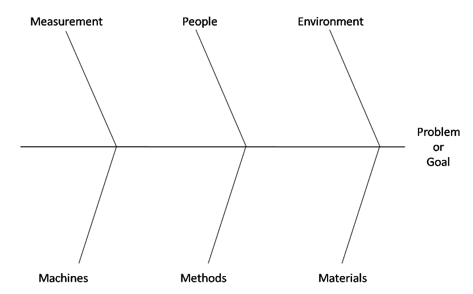As an Assistant Principal at a school with over 500 sixth-twelfth graders, every day is different and brings new and exciting challenges. Part of my role is the point person for disciplinary matters. Often students are referred to me by teachers when a student has an outburst that may not be appropriate or manageable in the classroom setting. Very often these outbursts are connected to emotions. The Social Emotional Learning core competency of self-management teaches students how to appropriately handle these emotions.
CASEL defines self-management as:
“The ability to successfully regulate one’s emotions, thoughts, and behaviors in different situations — effectively managing stress, controlling impulses, and motivating oneself. The ability to set and work toward personal and academic goals.
- Impulse control
- Stress management
- Self-discipline
- Self-motivation
- Goal-setting
- Organizational skills”
Often when a student is referred we will discuss triggers using the Fishbone model to get at the root causes of the student’s emotions. If you are not familiar with the Fishbone model for problem solving here is a diagram:

The Fishbone model was developed in the 1970’s in Japan as a means to improve quality control in industrial/business settings. However, it is also very useful when getting to root causes with students. Recently a student was sent to my office for swearing and throwing their notebook in Math class. I asked the student why they swore and threw their notebook. The student said they felt stress, anger and frustration from receiving a low grade. Digging deeper the student said they were afraid of receiving a consequence from their parents for receiving a low grade. This information helped us when we met with the parents of the same student to discuss setting realistic expectations for their child.
If you are wondering what are some ways that you can teach self-management in your classroom or in your home, here are two suggestions from waterford.org:
- Grounding Techniques
“Grounding techniques are a stress management exercise used to orient someone in the present when they’re emotionally overwhelmed. By focusing on their senses instead of their thoughts or feelings, grounding techniques can teach students how to calm down and manage their emotions when they are upset. Teach grounding techniques as a class and help students practice them when they feel stressed.
Here are a few grounding techniques for you to try out with your students:
- Name five different things you can see around the room
- Listen to energetic or relaxing music for one minute
- Hold an object in your hands and focus on the color or texture
- Take ten deep breaths, counting each one as your chest rises
- Eat a piece of candy and choose three words that describe its taste
2. SMART Goal Challenge
Self-motivation is an essential component to social-emotional learning. If you’re not sure how to self-motivate your students, try challenging them to reach their potential by setting SMART goals as a class.
At the beginning of the month or quarter, work with each student to set a SMART goal for themselves. SMART goals must be Specific, Measurable, Agreed-Upon, Relevant, and Time-Bound. Check in with your students several times throughout the month to measure their progress and support them if any challenges arise.
If your students meet their goal by the agreed-upon end date, give them a piece of candy or other reward. If they don’t, offer encouragement and work with them to accomplish their goal.”
“Name it, Tame it” created by Dr. Daniel Siegel is another helpful resource for teaching self-management. The idea behind this theory is that you have to name your emotion in order to be able to control it. So for example if you are feeling angry you can simply say, “I am feeling angry” to yourself or out loud and then work on appropriate avenues to deal with the anger (i.e: ask to see a counselor or speak with a trusted adult).
In conclusion, self-management can be learned and taught in school and at home. CASEL, Fishbone, grounding techniques, SMART goals and ‘Name it, Tame it’ are all helpful resources for teachers and parents that can help teach the core social/emotional competency of self-management. It is also possible to learn self-management as an adult. Many adults have not yet learned self-management skills and that is OK. It is never too late to learn to identify and regulate our emotions and get more organized to reach our goals.
Works/Websites/Authors Cited
- CASEL.org
- Waterford.org
- Siegel, Daniel